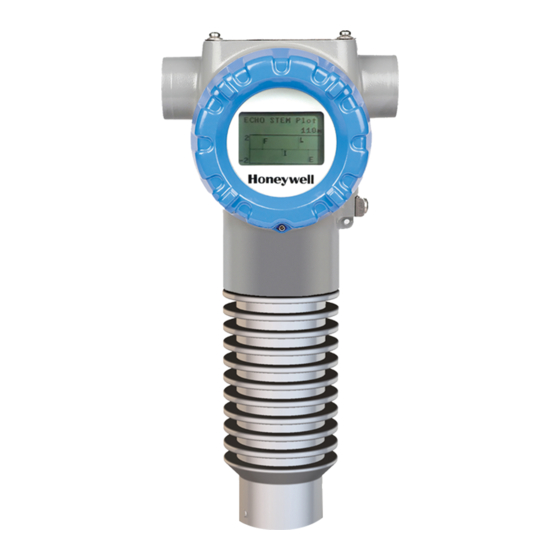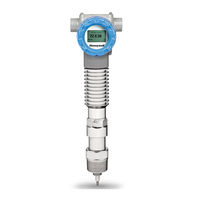
Honeywell SmartLine SLG 700 Manuals
Manuals and User Guides for Honeywell SmartLine SLG 700. We have 5 Honeywell SmartLine SLG 700 manuals available for free PDF download: Option Manual, User Manual, Quick Start Manual
Honeywell SmartLine SLG 700 User Manual (198 pages)
Level Transmitter
Guided Wave Radar
Brand: Honeywell
|
Category: Transmitter
|
Size: 7.58 MB
Table of Contents
-
-
Overview17
-
-
-
Overview31
-
-
-
Turbulence48
-
FEP Probe48
-
-
-
-
Preparation52
-
-
Secure the Probe102
-
-
Wiring Procedure110
-
Process Sealing111
-
-
-
5 Maintenance
142-
Overview142
-
Procedures145
-
-
Tools Required150
-
-
-
7 Parts List
177-
Overview177
-
Table 7-1: Parts177
-
-
8 Glossary
178 -
10 Security
195
Advertisement
Honeywell SmartLine SLG 700 Option Manual (220 pages)
SmartLine Level Transmitter
Guided Wave Radar
FOUNDATION Fieldbus
Brand: Honeywell
|
Category: Measuring Instruments
|
Size: 8.71 MB
Table of Contents
-
Introduction17
-
Execution32
-
Attributes41
-
Execution42
-
Attributes50
-
Attributes72
-
Execution72
-
Attributes79
-
Execution80
-
Attributes85
-
Execution86
-
Attributes91
-
Execution93
-
Attributes101
-
Execution102
-
Parameters List104
-
Attributes105
-
Integrator Block106
-
Execution106
-
Parameters List112
-
Attributes114
-
Arithmetic Block115
-
Execution115
-
Parameter List118
-
Attributes120
-
Execution121
-
Parameter List123
-
Attributes124
-
Execution125
-
Parameter List128
-
Attributes129
-
LAS Capability130
-
Class 3133
-
Recommendations134
-
Using the Dtm136
-
Introduction136
-
Components136
-
Downloads136
-
DTM Help143
-
Diagnostics179
Honeywell SmartLine SLG 700 User Manual (176 pages)
SmartLine Level Transmitter Guided Wave Radar
Table of Contents
-
-
Overview13
-
-
-
Overview27
-
-
-
Turbulence37
-
Foam37
-
Emulsions37
-
-
-
-
Preparation40
-
-
-
-
-
5 Maintenance
123-
Overview123
-
Procedures126
-
-
7 Parts List
153-
Overview153
-
Table 7-1: Parts153
-
-
8 Glossary
154 -
10 Security
172
Advertisement
Honeywell SmartLine SLG 700 User Manual (132 pages)
SmartLine Level Transmitter
Guided Wave Radar
HART Option
Brand: Honeywell
|
Category: Measuring Instruments
|
Size: 3.88 MB
Table of Contents
-
-
-
Settings15
-
Manage Dds16
-
-
Custom Views52
-
-
7 Using Dtms
82-
Introduction82
-
Components82
-
Downloads82
-
DTM Help83
-
-
General85
-
Process87
-
Measurement90
-
Summary97
-
-
Mounting98
-
Probe103
-
Transition Zones105
-
Linearization106
-
Volume107
-
Services118
-
Local Display119
-
Monitor120
-
Dashboard120
-
Echo Curve123
-
-
-
-
9 Security
128 -
Glossary
129 -
Index
130
Honeywell SmartLine SLG 700 Quick Start Manual (40 pages)
SmartLine Level Guided Wave Radar
Table of Contents
-
-
-
Flange Mount18
-
Remote Mount24
-
Nozzle Mount25
-
-
Wiring27




